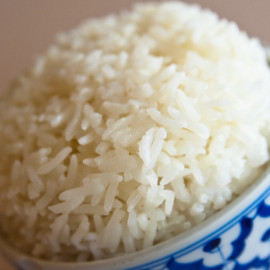In my last post, one rule for picking a healthy carb, I suggested a pretty simple rule: the more it looks like a plant, the better. But of course, some things can still raise questions. One of the biggest is definitley rice.
Rice comes in many varieties. From white to brown, yellow to wild, it can leave you feeling uncertain about what to choose. First, I still maintain that the more it looks like a plant the better. As a general rule things like brocolli, Brussels sprouts, lettuce, asparagus, green beans, etc. that actually look more like plants are “better” choices for frequent consumption than things like potatoes, squash, and rice. This is not to suggest that potatoes, squash, and rice are bad or totally off-limits. I would simply put them down lower on the hierarchy of choices. Eat less of them, and more of the things that look like little trees.
The Glycemic Index
That being said let’s look at how we might evaluate those other plant-like things. The Glycemic Index is a good tool to use for this purpose. The Index essentially expresses how a food affects your blood sugar. The higher the number the food is assigned, the more it raises your blood sugar, with 100 being the maximum (and therefore ‘worst’). For the purposes of health and fitness a good rule of thumb is to stick to foods that don’t raise blood sugar too dramatically. So as far as rice is concerned, we can use the Glycemic Index to make a choice between rices if we like.
According to Harvard University’s Index rice varieties stack up in the following manner:
White Rice – 89
Fast Cooking Basmati – 67
Brown Rice – 50
So, going with the index if we have the choice and we would like to eat some rice, we’d be best served to go with either basmati or brown rice over the much higher white rice.
CONCLUSION
To reiterate, what you really want to do as far as choosing vegetables is try to stick to things that most closely resemble actual plants. However, it is still acceptable to eat things like rice and potatoes from time to time and if you want to make the best choices, then the Glycemic Index is one tool that can help you select a specific variety and figure out the kind of place it should have in your overall diet.
FURTHER READING
http://www.health.harvard.edu/healthy-eating/glycemic_index_and_glycemic_load_for_100_foods
Nutrition: Don’t Forget the Big Picture
PHOTO
Steven Depolo – Rice Bowl Macro January 29, 20111, License


